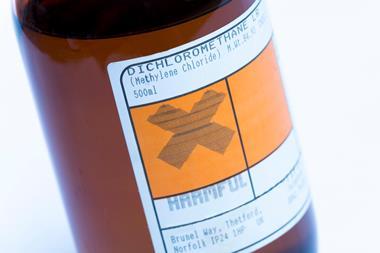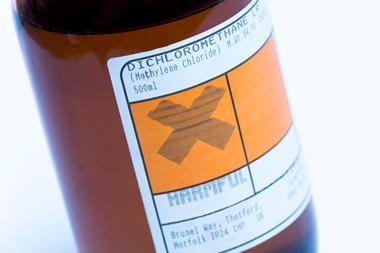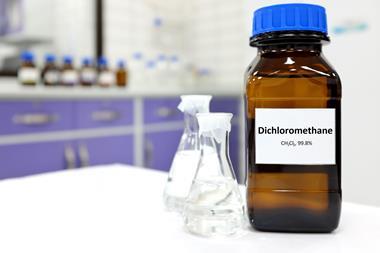The US Environmental Protection Agency (EPA) has proposed to ban most uses of dichloromethane (methylene chloride) under the Toxic Substances Control Act (TSCA) that governs US chemical policy. Dichloromethane is a widely used laboratory solvent that is used in a wide range of products like adhesives, sealants, degreasers and paint strippers. It’s the second substance, following asbestos last year, to undergo risk management under the reformed Tsca process created in 2016.
The EPA’s proposal would prohibit manufacturing, processing and distribution of dichloromethane for all consumer uses, ban most industrial and commercial uses, and create strict workplace controls for the remaining uses.
Laboratory use of dichloromethane would be regulated under the plan, and would be subject to a workplace chemical protection programme rather than a prohibition. This initiative would limit occupational exposure to an average of 2 parts per million (ppm) over eight hours and 16 ppm over 15 minutes.

The EPA has identified risks for adverse human health outcomes from inhalation and dermal exposures to dichloromethane, including neurotoxicity and liver effects. The agency also found increased risks for cancer from chronic inhalation and dermal exposures to the substance.
‘The science on dichloromethane is clear, exposure can lead to severe health impacts and even death, a reality for far too many families who have lost loved ones due to acute poisoning,’ said EPA administrator Michael Regan when announcing the agency’s proposals on 20 April.
According to the EPA, at least 85 people have died in the from acute dichloromethane exposure since 1980. Most of these were workers doing home renovation contracting work and some of them were fully trained and wearing with personal protective equipment. Many more ‘have experienced severe and long-lasting health impacts, including certain cancers’, the agency notes.
Contested by industry
During the Obama administration, the EPA determined that dichloromethane-based paint strippers present ‘an unreasonable risk of injury to health’. In 2019, the agency banned the consumer sale of such products, but were sued by public health advocates who felt that the rules did not go far enough and that tougher measures should have been enacted sooner.
The EPA expects that most of the new changes it is proposing would be fully implemented in 15 months and would amount to a prohibition of an estimated 52% of annual production volume for end uses subject to TSCA. The agency says that for most uses of dichloromethane that it is proposing to prohibit, alternative products are generally available at similar cost.
But the American Chemistry Council (ACC), which represents US chemical companies, immediately pushed back against the EPA, calling dichloromethane ‘an essential compound’ used to produce many consumer goods.
In a response to the EPA’s announcement, the trade group expressed concern that it ‘introduces regulatory uncertainty and confusion’ with existing dichloromethane exposure limits set by the US Occupational Safety and Health Administration. The ACC argues that the EPA has ‘not established the necessity’ of setting an additional occupational exposure limits to those already in place.
The lobby group also accused the EPA of failing to fully evaluating the supply chain impacts of its proposal. ‘That scale of reduction in production, that rapidly, could have substantial supply chain impacts if manufacturers have contractual obligations they need to follow through on or if manufacturers decide to cease production entirely,’ the ACC warned. ‘These sorts of ripple effects could impact critical uses, including pharmaceutical supply chains and the specific safety-critical, corrosion-sensitive critical uses identified by EPA.’












No comments yet